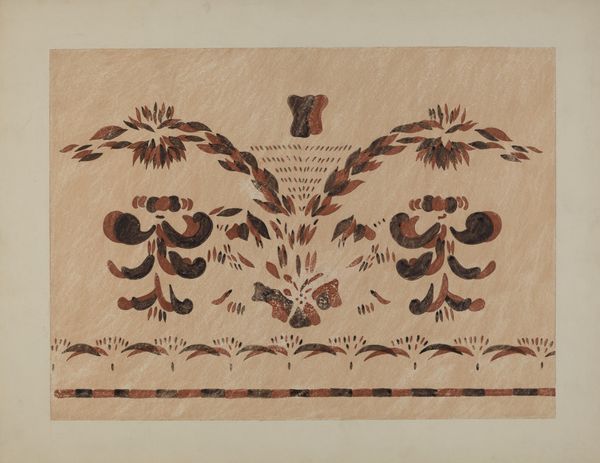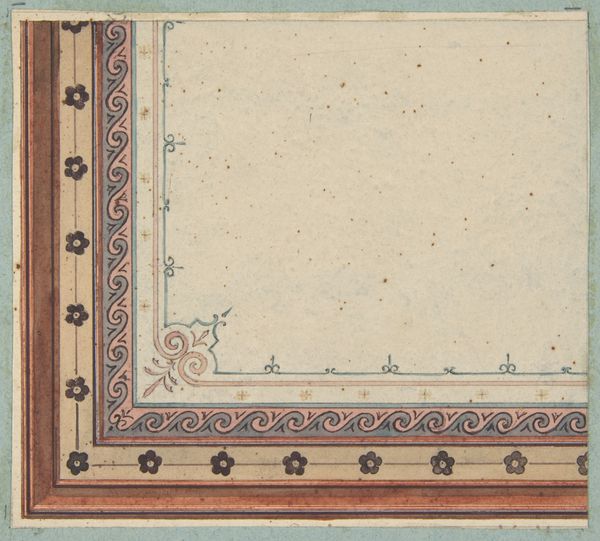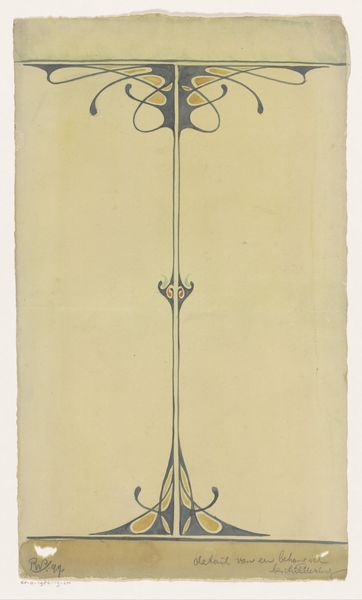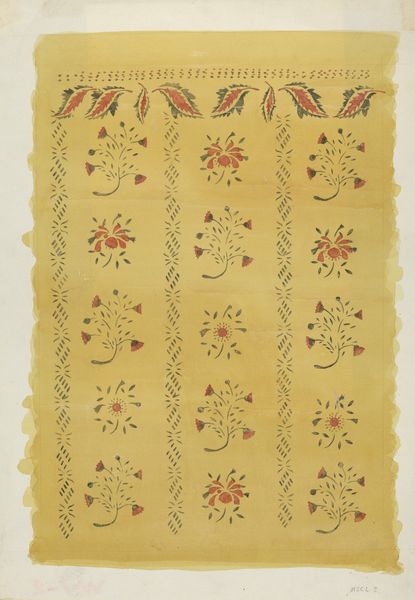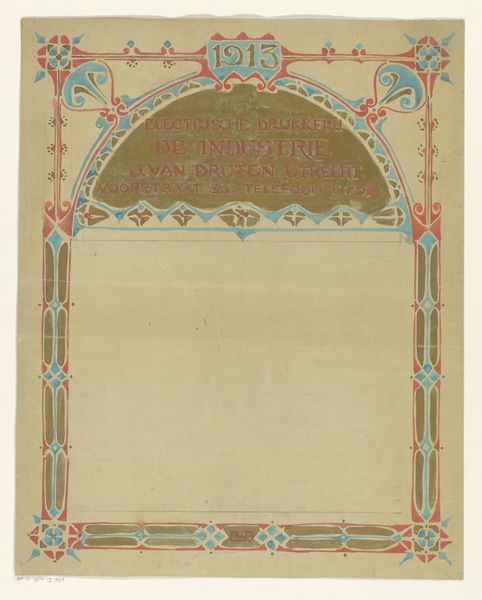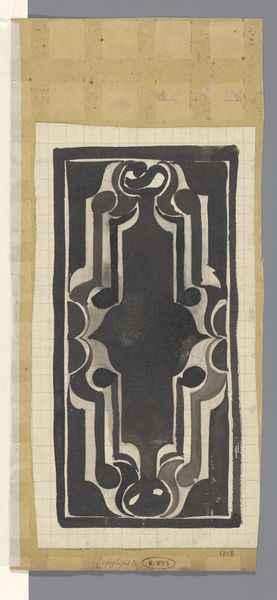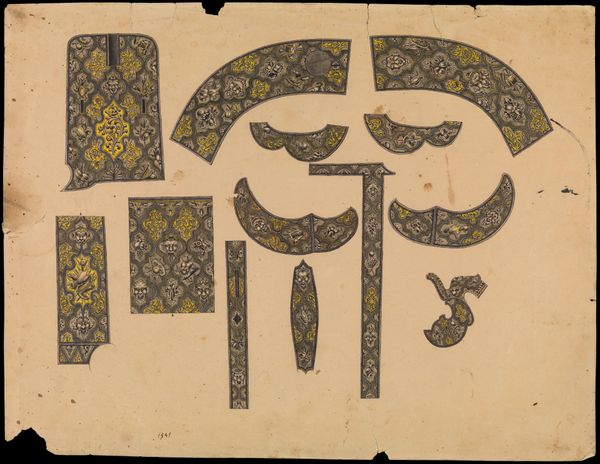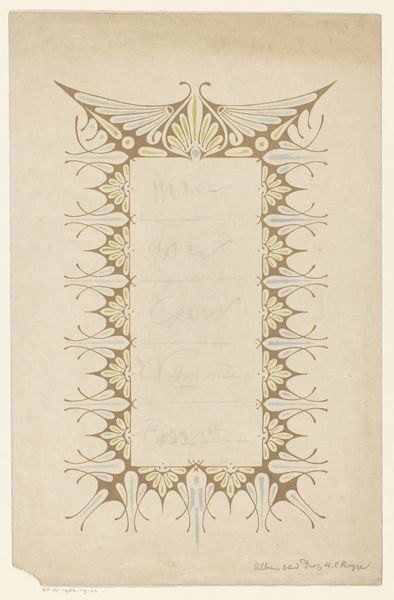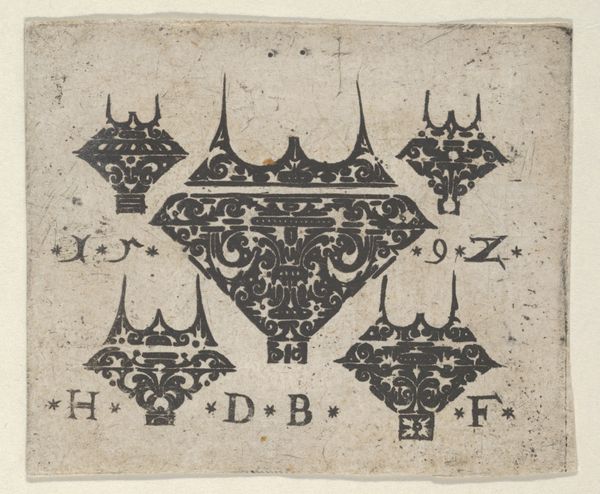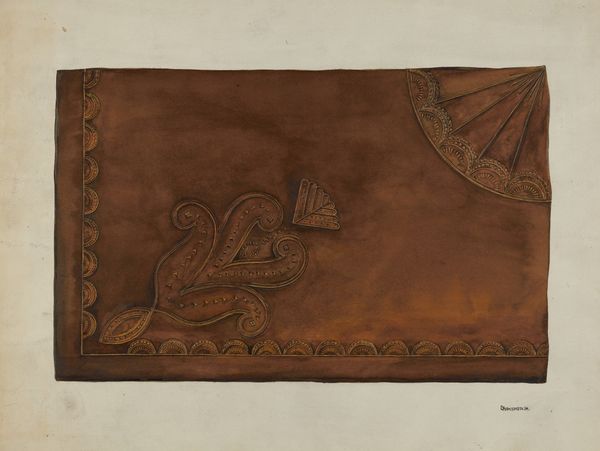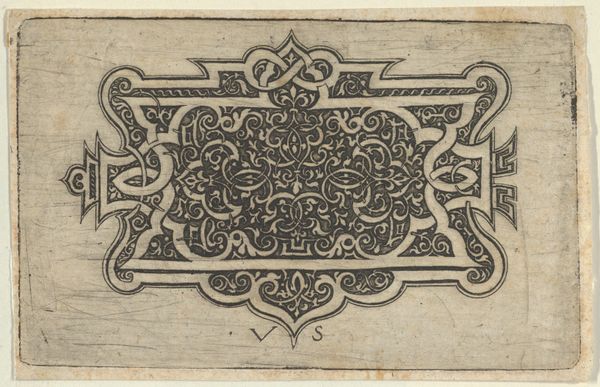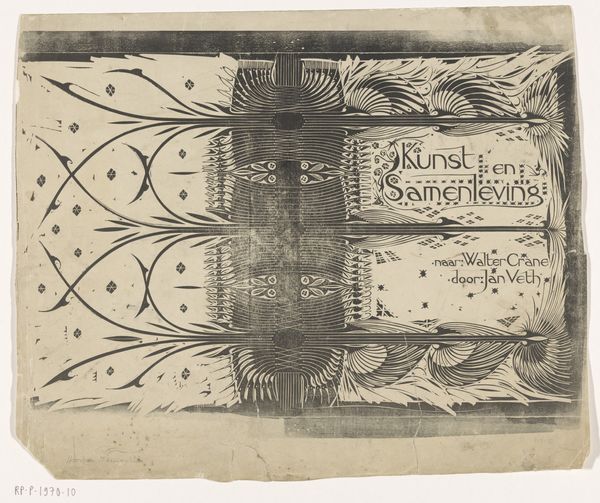
drawing, gouache
#
drawing
#
narrative-art
#
gouache
#
figuration
#
watercolour illustration
Dimensions: overall: 46 x 61.8 cm (18 1/8 x 24 5/16 in.)
Copyright: National Gallery of Art: CC0 1.0
Editor: This is a drawing, "Facsimile of a Sioux Robe with Porcupine Quills," made between 1861 and 1869 by George Catlin using watercolor and fibre-art. It's surprisingly intricate. How do you read its depiction and what strikes you the most about the material qualities? Curator: Well, focusing on the material production, the robe itself, traditionally made with meticulous labor and significant cultural meaning, has been transformed through the media of watercolor and drawing. Catlin is mediating that original making. Editor: So it's not the object itself, but a representation, which changes how we perceive the labor. Curator: Precisely. The original robe signified status, skill, and cultural narrative within the Sioux community, crafted with materials readily available and holding spiritual meaning. The drawing transforms this, shifting it to the realm of observation and documentation for a presumably Western audience. Editor: Interesting. How does that impact the 'authenticity' we might expect from viewing it? Curator: Catlin's work introduces a new layer of mediation, a reinterpretation of materials and production processes. The choice of watercolor, a portable and readily accessible medium for the artist, stands in stark contrast to the intricate process of quillwork. It becomes a commodity to be traded and viewed according to different economic factors than the robe it replicates. Editor: It’s a far cry from the physical act of creating the robe. Thanks, I hadn't considered how the change of medium informs so much. Curator: And in doing so, changes not just how we appreciate art, but understand culture through making. The material becomes a record of colonial consumption and aestheticisation of indigenous cultures.
Comments
No comments
Be the first to comment and join the conversation on the ultimate creative platform.
